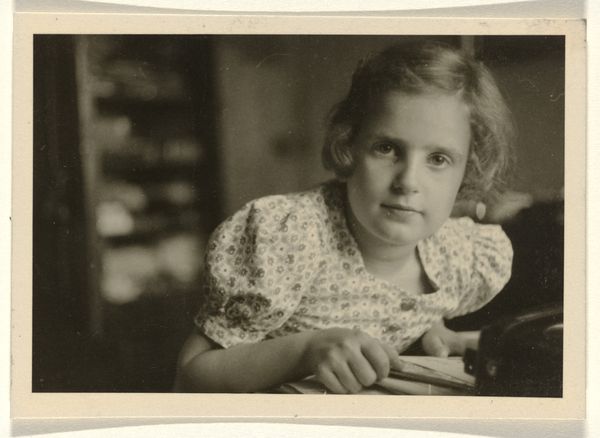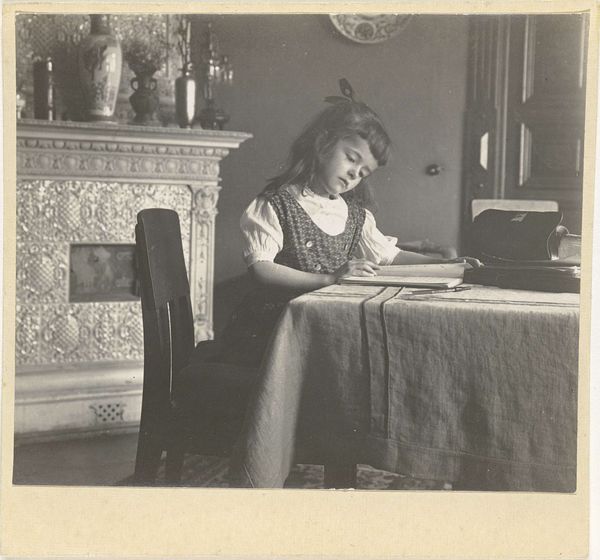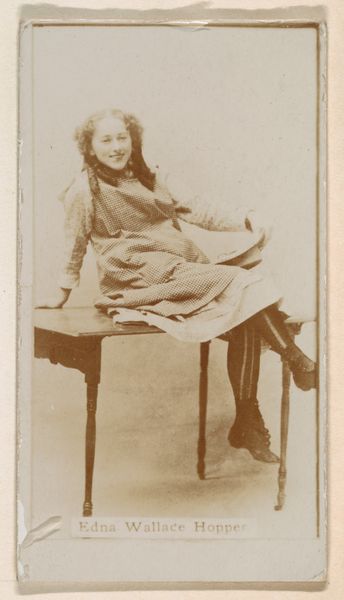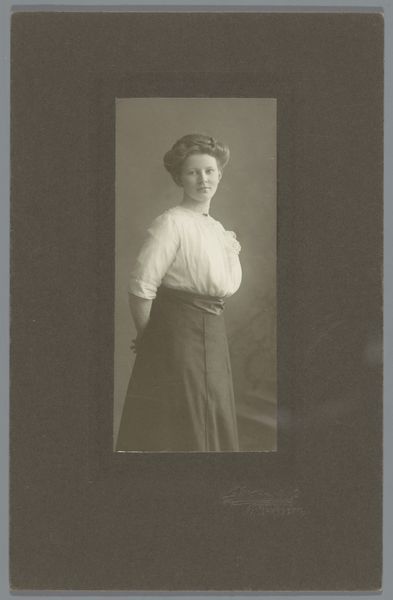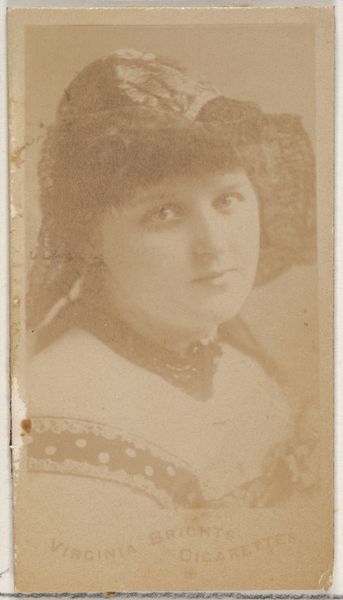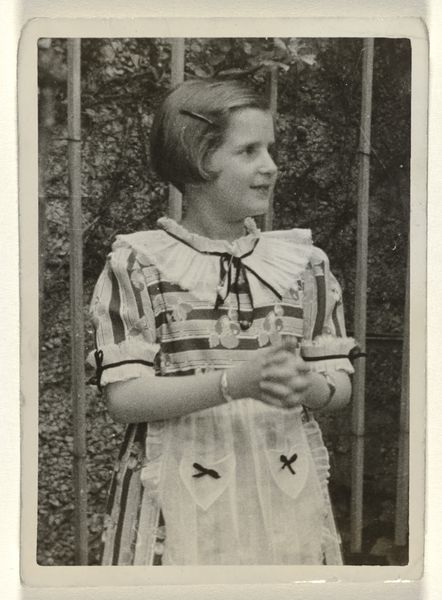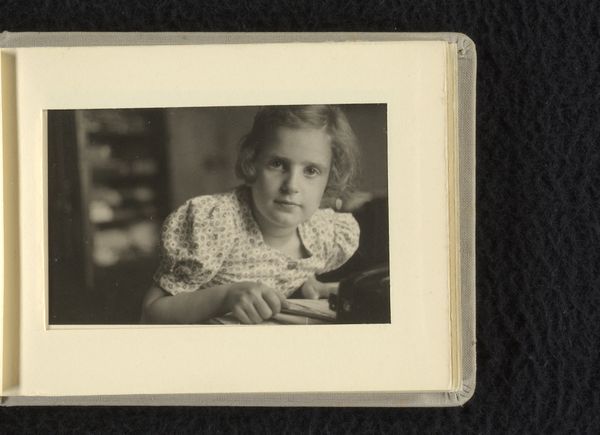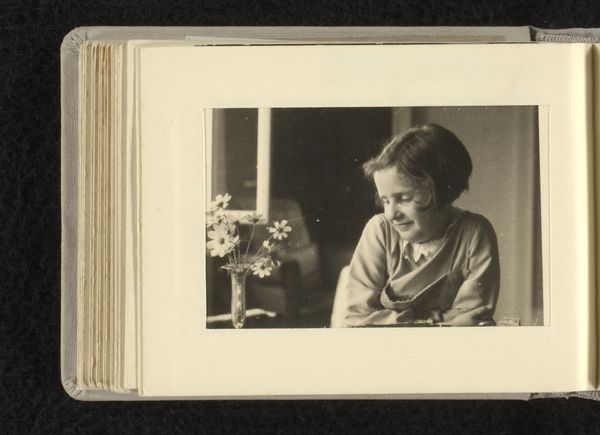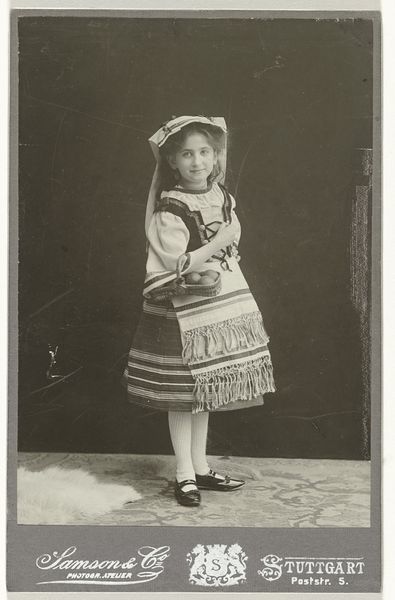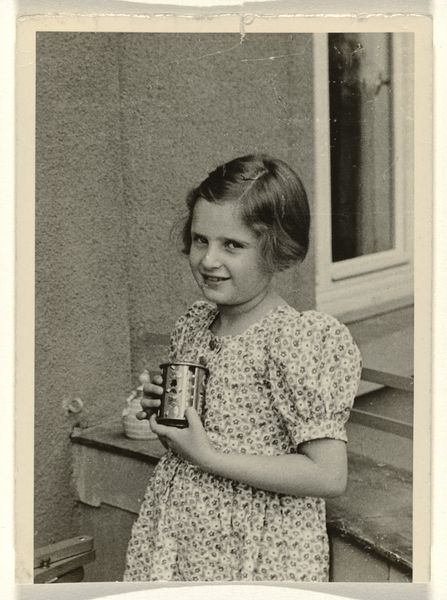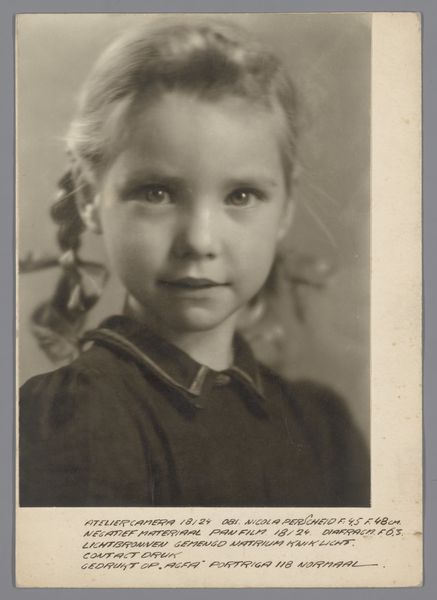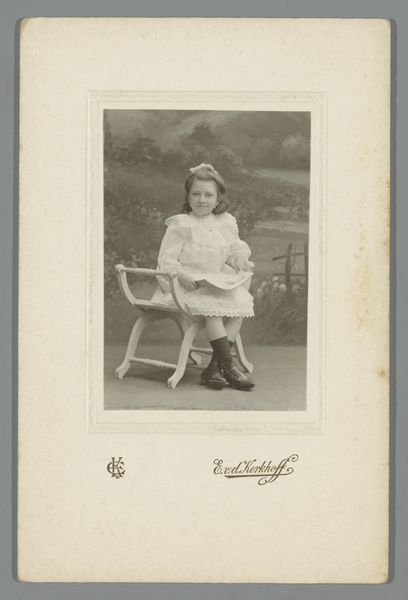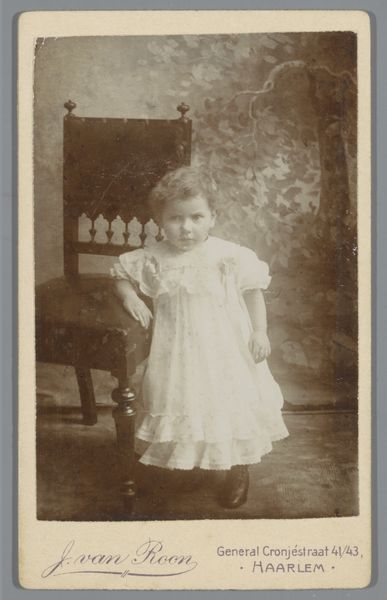
photography, gelatin-silver-print
#
portrait
#
print photography
#
still-life-photography
#
photo restoration
#
archive photography
#
photography
#
historical photography
#
couple photography
#
old-timey
#
gelatin-silver-print
#
modernism
#
realism
Dimensions: height 80 mm, width 55 mm
Copyright: Rijks Museum: Open Domain
Editor: This is a gelatin-silver print titled "Isabel Wachenheimer schrijvend aan een lessenaar, 1936," created by an anonymous artist. It has such an intimate and nostalgic feel. What does it say to you, historically speaking? Curator: The fact that this image exists, a personal snapshot of a young girl during a tumultuous period, is quite telling. It immediately prompts questions about access to photographic technology at that time and who controlled the narratives being disseminated. Does the presence of what appears to be child's crown provide clues about class, family history, religious observation, gender identity, or social expression? Editor: It's a seemingly simple photograph, yet it opens up all these avenues for exploration! Thinking about the power structures makes me reconsider my initial interpretation. Curator: Precisely. Consider also the role photography played in shaping public perception during the 1930s. How did photographic portraits of individuals contribute to or challenge dominant ideologies? Who had the power to represent and who was being represented? What does that say about the place and purpose of art within its public reception and consumption? Editor: I never really thought about private photos contributing or challenging the art landscape on such a broad level. I guess it is naive to view this just as a slice-of-life moment. Curator: The seemingly mundane often holds profound reflections of its time. Even family portraits subtly engage with social and political contexts, revealing aspects of identity, belonging, and even resistance. Think about who has access to create their own historical representation, and who doesn't. Editor: I see the power dynamics inherent in even seemingly straightforward art now. Curator: Exactly, and recognizing that changes how we understand everything from art movements to individual works. Editor: Thank you, that really broadened my perspective on the function and positionality of such historical artwork.
Comments
No comments
Be the first to comment and join the conversation on the ultimate creative platform.
